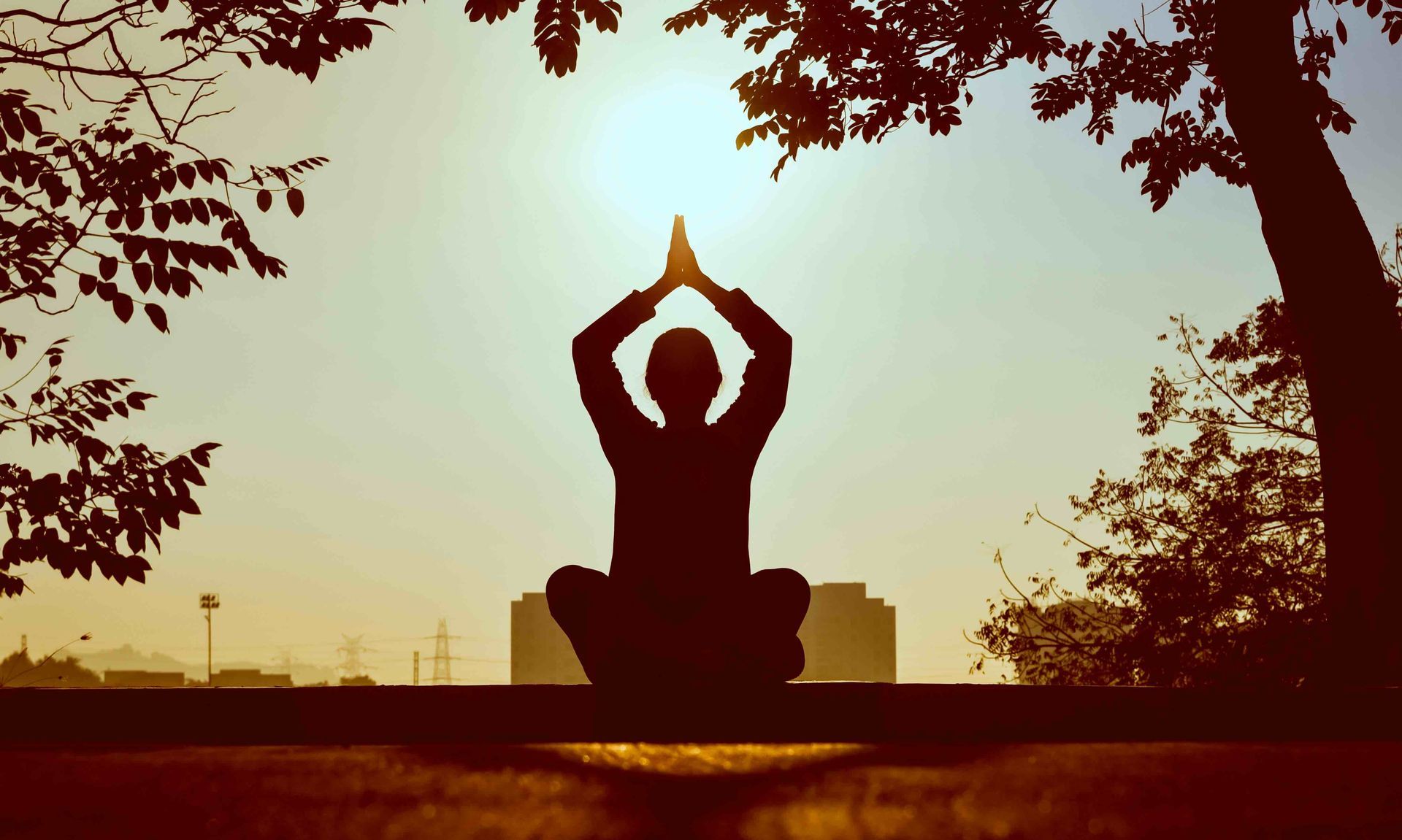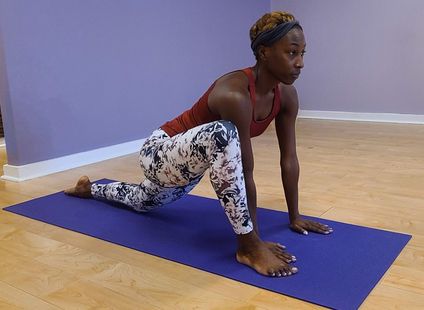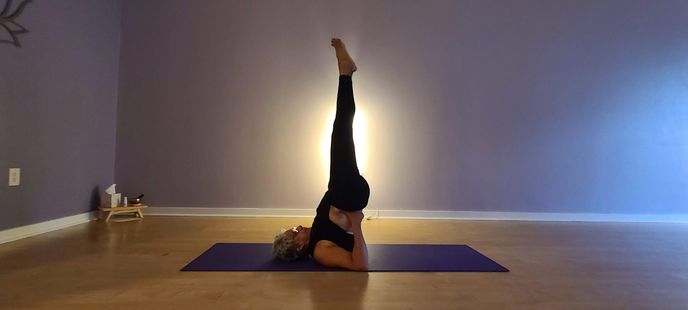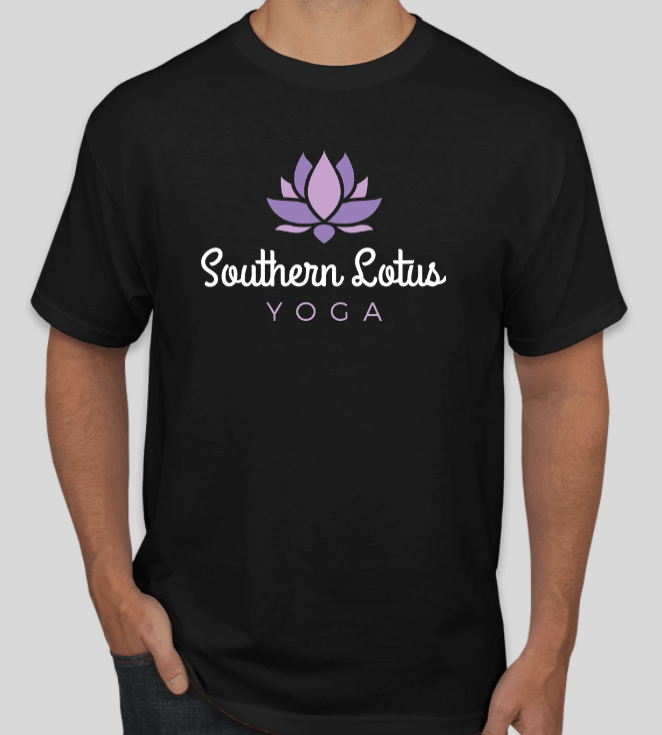What Our Customers Say
Blog

Thanksgiving is a time to come together, share meals, and express gratitude for the blessings in our lives. While the holiday often focuses on external celebrations, it can also be an opportunity for inner reflection and mindfulness. Yoga, with its emphasis on presence and connection, offers a powerful way to cultivate gratitude not only during Thanksgiving but throughout the season. Let’s explore how yoga can deepen your practice of gratitude and enrich your Thanksgiving experience. Why Gratitude Matters for Mental and Emotional Wellbeing Gratitude is more than just saying thank you; it’s a mindset that can transform how we experience life. Scientific studies have shown that practicing gratitude can: Improve Mental Health: Reduce symptoms of depression and anxiety. Strengthen Relationships: Foster deeper connections with others. Boost Resilience: Help you cope with challenges and setbacks. Enhance Overall Wellbeing: Increase feelings of happiness and life satisfaction. Incorporating gratitude into your yoga practice allows you to embody this powerful mindset physically, mentally, and spiritually. Yoga Practices to Cultivate Gratitude Here are some ways to integrate gratitude into your yoga routine this Thanksgiving season: 1. Set an Intention of Gratitude Why: Starting your practice with a clear intention focusing your mind and energy. How to Practice: Before beginning your yoga session, take a moment to reflect on something you’re grateful for. It could be a person, experience, or even the ability to move and breathe. Mantra: Repeat a simple affirmation, such as "I am grateful for this moment" or "I embrace the abundance in my life." 2. Heart-Opening Poses Why: Heart-opening poses encourage feelings of compassion, connection, and gratitude. 3. Grounding Poses Why: Grounding poses help you feel rooted and connected to the earth, fostering appreciation for stability and support. Mindfulness Tip: With each inhale, imagine drawing in gratitude, and with each exhale, release tension or negativity. 4. Gratitude Meditation Why: Meditation enhances your awareness and anchors your gratitude practice. How to Practice: Sit comfortably and close your eyes. Reflect on three things you’re grateful for, visualizing them clearly. Notice how this makes you feel in your body and mind. Breathing Technique: Try alternate nostril breathing (Nadi Shodhana) to calm the mind and enhance focus. Creating a Thanksgiving Yoga Ritual Make yoga part of your Thanksgiving traditions with this simple ritual: Begin with Gratitude: Light a candle and take a few moments to reflect on what you’re thankful for. Practice a Heart-Opening Flow: Include poses like Camel, Upward Dog, and Bridge. Meditate on Abundance: Spend 5-10 minutes in a gratitude-focused meditation. End with Savasana: Seal your practice with deep relaxation and visualization. Carrying Gratitude Beyond the Mat Yoga teaches us that the lessons we learn on the mat can be applied to our daily lives. This Thanksgiving season, let your practice inspire you to: Express Gratitude: Take time to thank the people who bring joy and support to your life. Find Joy in Small Moments: Appreciate the simple pleasures, like a warm cup of tea or a beautiful sunset. Practice Mindful Giving: Offer kindness and generosity to others, embodying the spirit of gratitude. Thanksgiving is a beautiful reminder to pause and reflect on the abundance in our lives. By incorporating yoga into your gratitude practice, you can deepen your connection to yourself and others, fostering a sense of peace and fulfillment. This season, let your yoga mat become a space for cultivating gratitude and celebrating the beauty of the present moment. Take a deep breath, open your heart, and give thanks—both on and off the mat.

As summer fades and fall arrives, nature reminds us of the beauty of change. The crisp air, falling leaves, and shorter days invite us to slow down, reflect, and realign ourselves. However, transitions—whether seasonal or personal—can be challenging. Yoga offers a grounding and nurturing practice that helps us embrace change with grace and resilience. Here’s how yoga can support your journey into fall and help you find balance during this seasonal shift. The Energy of Fall Fall represents a time of letting go, much like trees shedding their leaves. It’s a season to release what no longer serves us and make space for new growth. As the pace of life often quickens with back-to-school routines, holidays on the horizon, and darker evenings, it’s easy to feel overwhelmed. Yoga helps us stay grounded, balanced, and open to the lessons that change brings. How Yoga Supports Seasonal Transitions Grounding Practices: Fall’s energy can feel scattered as we adjust to new rhythms. Grounding yoga poses help you stay rooted, calm, and centered during this time of transition. Emotional Release: Just as leaves fall effortlessly, yoga encourages us to let go of emotional baggage and old patterns that weigh us down. Building Inner Warmth: As temperatures cool, dynamic flows and breathwork generate warmth and energy, supporting both body and mind. Reflection and Introspection: Yoga invites us to turn inward, fostering self-awareness and mindfulness as we align with the quieter, reflective energy of autumn. Breathwork for Fall Breathwork (pranayama) is a powerful tool for navigating change. Try these practices: Alternate Nostril Breathing (Nadi Shodhana): Balances energy and calms the mind, helping you stay centered. Ocean Breath (Ujjayi): Generates inner warmth and steadies the mind, perfect for cooler days. Creating a Fall Yoga Ritual Set Intentions: Begin your practice by reflecting on what you want to release and what you hope to invite into your life this season. Incorporate Nature: Practice outdoors if possible or bring autumn elements like leaves or candles into your space. Stay Consistent: Even a short daily practice can help you stay grounded and connected as the season unfolds. Fall is a season of transformation, reminding us of the impermanence and beauty of life. Yoga serves as a steady companion, helping us navigate this transition with mindfulness and grace. As you move through the changing rhythms of fall, let your yoga practice be a source of stability, warmth, and inspiration. Embrace the season’s lessons, and trust that, like the trees, you too are creating space for growth and renewal.

In today’s fast-paced world, we often find ourselves juggling responsibilities, meeting deadlines, and managing expectations—both our own and those of others. Amidst this chaos, self-compassion and emotional balance can feel elusive. Yoga, however, offers a sanctuary where we can reconnect with ourselves, cultivate kindness, and find harmony within. Let’s explore how yoga fosters self-compassion and emotional balance, helping us navigate life’s challenges with grace and resilience. The Connection Between Yoga and Self-Compassion Self-compassion involves treating ourselves with the same kindness and understanding that we extend to a friend in need. It’s about embracing imperfections and recognizing that struggles are a shared part of the human experience. Yoga naturally nurtures self-compassion through its emphasis on mindfulness, acceptance, and non-judgment. Mindful Awareness: Yoga encourages us to tune into the present moment, observing our thoughts and feelings without judgment. This practice helps us become more aware of self-critical tendencies and replace them with kindness. Acceptance of Limitations: Each yoga pose teaches us to honor our body’s unique abilities and limitations. By focusing on progress rather than perfection, we learn to let go of unrealistic expectations. Connection to Breath: Breathwork (pranayama) anchors us in the present, creating a sense of calm and helping us respond to challenges with compassion rather than reactivity. How Yoga Cultivates Emotional Balance Emotional balance is the ability to experience and process emotions without becoming overwhelmed or detached. Yoga fosters this balance by creating space for emotional release, resilience, and self-awareness. Releasing Stored Emotions: Certain yoga poses, such as hip openers and heart openers, release tension stored in the body. These physical releases often correlate with emotional release, allowing us to process and let go of unresolved feelings. Building Resilience: Holding challenging poses teaches us to stay present and breathe through discomfort. This practice builds emotional resilience, helping us face life’s difficulties with patience and equanimity. Enhancing Self-Awareness: Yoga’s introspective nature encourages us to observe our emotional patterns. Over time, this awareness helps us identify triggers, manage reactions, and cultivate healthier responses. Tips for Deepening Your Practice Set an Intention: Begin each yoga session by setting an intention focused on self-kindness or emotional balance. Journal Your Experience: Reflect on your yoga practice and any emotions that arise. Journaling can provide clarity and help you track your growth. Practice Gratitude: After your practice, take a moment to appreciate your efforts and the care you’re giving yourself. Seek Support: If certain emotions feel overwhelming, consider working with a yoga therapist or counselor to deepen your healing journey. Yoga is a powerful tool for cultivating self-compassion and emotional balance. By embracing the practice with an open heart, you can learn to navigate life’s ups and downs with greater ease and kindness. Remember, self-compassion isn’t about being perfect; it’s about showing up for yourself—just as you are—with love and understanding. So, roll out your mat, take a deep breath, and let yoga guide you toward a more compassionate and balanced way of being.
















